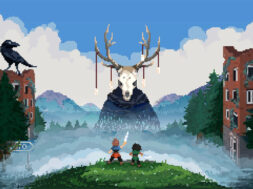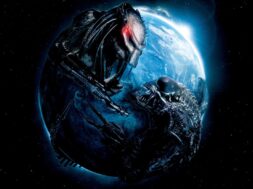Mortal Kombat: Armageddon felt like an end to everything the series had been building towards for many years, literally funneling every character – from elder gods to goofy guest stars – into a massive meat grinder, letting that bloody paste congeal before rebooting the franchise half a decade later.
2006 wasn’t what you’d call a hot year for fighting games. Although Mortal Kombat had continued to maintain its presence within the genre (thanks to games such as Deadly Alliance, Deception, and Shaolin Monks) Armageddon failed to stir up much fanfare, at least when compared to those arcade classics or NetherRealm’s recent revivals.
Ed Boon, Midway Games, and company was using the same engine and core fighting mechanics but still had some interesting ideas for its flagship franchise. Armageddon’s Konquest mode, while hardly groundbreaking, can still be seen as a template for the story mode structure used in later Mortal Kombats which, in turn, has been adopted by many other fighting game series.
Instead of sandwiching a string of matches between character-specific cutscenes, Konquest had you exploring the wider MK universe as newcomer, Taven. Between traditional fights, players took control of the fire-wielding demigod as he travels between realms, occasionally battling grunts using a 3D fighting system pinched from Shaolin Monks.

The reason why Konquest doesn’t get brought up as much as it should is due to Armageddon’s story itself. Even with Mortal Kombat X and NetherRealm’s Injustice 2, crafting a narrative that loops in every playable character can often mean taking liberties and the occasional awkward crowbarring of cameos. It was very much the same with Armageddon though its plot was far less compelling, relying on fans knowing the inner workings of MK’s bizarre patchwork of lore. Putting Taven front and center was also a misstep – he had no previous history with the franchise or any kind of likability.
Speaking of characters, Armageddon still boasts the biggest roster of any Mortal Kombat game with a total of 62 fighters (63, if you count the Wii-exclusive Khameleon). The game’s intro movie is a fabulous wedge of fan service as they all duke it out in one final royal rumble upon the steps of a great pyramid. The developers even threw in joke characters such as Mocap (literally a dude in a motion capture rig) and Meat (literally a dude made of meat). Armageddon also had a strange choice of villain, opting for the unimaginative Blaze who was, at one point, merely a background character standing in the crowd of one Mortal Kombat II stage.
If some of the whackier additions to MK’s cast weren’t to your taste, you could make your own. For the first time in series history, Mortal Kombat allowed players to “kreate” custom fighters, mashing together fighting styles and unlockable special moves with a decent spread of costumes and cosmetics to tinker with.
Armageddon went really hard on these collectibles and unlocks. The Krypt, first introduced in Deadly Alliance, made a return with loads of items from players to amass including character skins, artwork, and background music, as well as the aforementioned custom parts to build your own fighters.

Seemingly not content with Armageddon’s over-the-top madness, Midway went one step further. The cherry on top? Motor Kombat – a kart-racing side game complete with eight playable cartoon characters and a handful of stages. Looking back, this addition was completely mad, having nothing to do with the core fighting of Mortal Kombat. It almost felt like the early stages of a side project the Armageddon team bolted on at the last minute. While half-baked it still made for a fun distraction, hosting eight kombatants per race, weaving between hazards and using their specific powers to wreak havoc out on the track.
Looking back, Armageddon was a surprisingly robust package even when compared to the fighting games of today. However, it touched down at a time when the genre had briefly fallen out of fashion and the sixth console generation was starting to wind down. It’s possible that fatigue was also starting to set in, those narrative threads Midway had been laying for years starting to tangle and fray at the ends. Mortal Kombat needed a clean break and that’s exactly what happened, leading to one of the industry’s most successful reboots to date.









